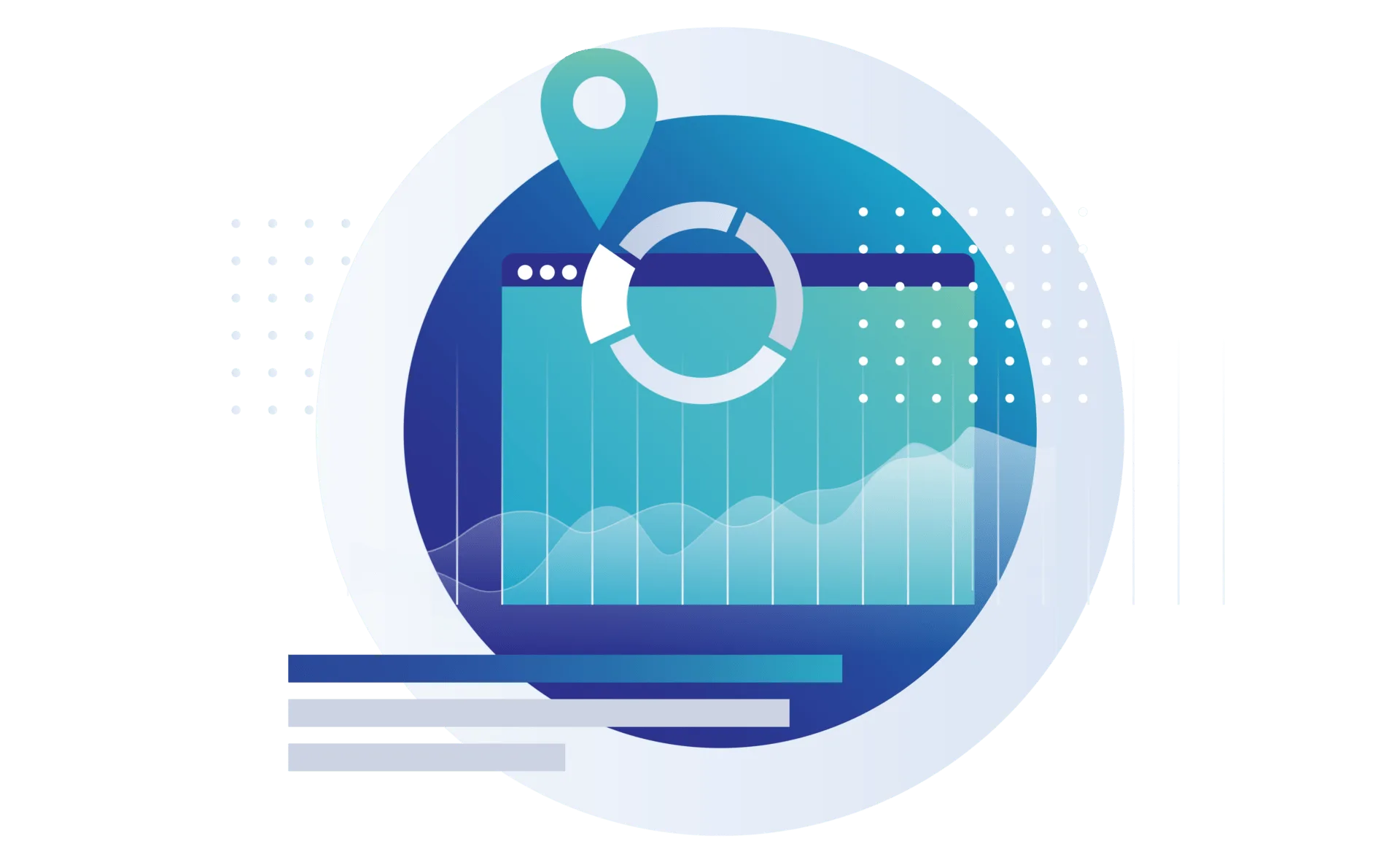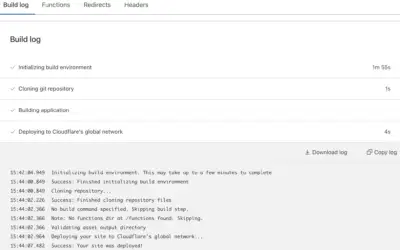Understanding your website visitors
One of the key aspects of running a successful website is understanding your visitors. By gaining insights into who is accessing your site, you can better tailor your content and offerings to meet their needs. A deeper knowledge of your audience allows you to create a more personalized experience, which in turn increases user engagement and satisfaction.
One way to understand your website visitors is by analyzing their demographics. Knowing their age, gender, location, and interests can help you create targeted marketing campaigns and optimize your site accordingly. These insights can be obtained through tools such as Google Analytics, which provide comprehensive data on your audience’s characteristics and behavior. With this information, you can make informed decisions on content creation, design updates, and overall website strategy.
Tracking website performance metrics
One of the key aspects of managing a website is tracking and monitoring its performance metrics. By doing so, website owners can gain valuable insights into how well their website is performing and identify areas for improvement. These metrics provide information on various aspects, such as website traffic, user engagement, and page loading speed.
Tracking website performance metrics allows website owners to understand the effectiveness of their online presence and make data-driven decisions to enhance user experience. For instance, by analyzing website traffic, they can identify the sources of incoming visitors and determine which channels are driving the most traffic to their site. Additionally, monitoring user engagement and behavior metrics helps pinpoint areas where visitors are spending the most time on the website or where they might be dropping off. By optimizing these pages or addressing any issues, website owners can improve overall user satisfaction and increase conversions.
Analyzing traffic sources and referrers
To gain a comprehensive understanding of website performance, it is crucial to analyze traffic sources and referrers. This analysis helps identify where your website visitors are coming from and how they found your site. By examining this data, you can uncover valuable insights into the effectiveness of your marketing efforts and make informed decisions for future campaigns.
By tracking traffic sources, you can determine whether your visitors are coming from organic search results, paid advertisements, social media platforms, or other websites. This information enables you to evaluate the success of your various marketing channels. Additionally, understanding the referrers can provide insights into which websites or sources are driving the most traffic to your site. This data can be invaluable for optimizing your marketing strategies and partnerships to maximize your website’s visibility and reach your target audience more effectively.
Identifying popular pages and content
One of the key aspects of website optimization is understanding which pages and content are most popular among your visitors. By identifying the pages that receive the highest number of visits, you can gain valuable insights into the preferences and interests of your audience. This information can be used to refine your content strategy, tailor your marketing campaigns, and improve overall user experience. It allows you to focus your resources on creating more of the content that resonates with your target audience, ultimately driving more traffic and engagement to your website. Therefore, regularly tracking and analyzing the popularity of your pages and content is crucial for maximizing the effectiveness of your online presence.
In addition to identifying the most popular pages, it is equally important to understand the factors that contribute to their success. By analyzing the characteristics and qualities of your top-performing content, you can uncover patterns and trends that help you replicate and optimize your future content. This can involve examining the topics, formats, and themes that resonate with your audience, as well as identifying the keywords and SEO strategies that drive organic traffic. By leveraging this understanding, you can strategically create and promote content that is more likely to attract and engage your target audience, while constantly refining and adapting your content strategy based on the ever-changing preferences and behaviors of your visitors.
Monitoring user engagement and behavior
One of the key aspects of optimizing your website is to continuously monitor user engagement and behavior. By understanding how visitors interact with your site, you can make informed decisions to improve their overall experience. This involves tracking metrics such as time spent on each page, bounce rates, click-through rates, and conversion rates.
Analyzing user engagement data can provide valuable insights into what aspects of your website are attracting and retaining visitors, as well as identifying areas for improvement. For example, if you notice a high bounce rate on a particular page, it may indicate that the content or layout needs to be adjusted to enhance user engagement. Similarly, tracking click-through rates on call-to-action buttons can help you assess the effectiveness of your marketing efforts and make necessary adjustments to increase conversions. Ultimately, monitoring user engagement and behavior helps you create a more user-friendly and compelling website that meets the needs and expectations of your audience.
Discovering mobile device usage trends
Mobile devices have revolutionized the way people access and engage with online content. As technology continues to advance, understanding mobile device usage trends is crucial for businesses and website owners. By analyzing data on the types of mobile devices visitors use, the screen sizes, operating systems, and browsers they prefer, companies can optimize their websites for a seamless mobile experience.
With this information, businesses can make informed decisions regarding responsive design, mobile app development, and mobile advertising strategies. By keeping track of mobile device usage trends, website owners can ensure that their content is easily accessible and visually appealing across a wide range of devices, ultimately improving user satisfaction and engagement.
Uncovering potential security threats and attacks
Website security is of utmost importance for businesses and individuals alike. Uncovering potential security threats and attacks is an essential step in safeguarding your online presence. By monitoring and analyzing website performance metrics, such as unusual spikes in traffic or unexpected changes in user behavior, you can identify potential breaches in security.
Keeping a close eye on traffic sources and referrers can also help in uncovering potential security threats. By examining patterns and anomalies in the sources of incoming traffic, you can identify suspicious activity or unusual sources of referral. This can help you detect any malicious attempts to infiltrate your website or compromise user data. It is crucial to continuously monitor and analyze these metrics to stay one step ahead of potential security threats and ensure the safety of your website and its visitors.
Measuring website loading speed and optimization
Website loading speed is a crucial factor that can have a significant impact on user experience. The time it takes for your website to load can determine whether visitors stay or leave. Studies have shown that a delay of just a few seconds can result in a high bounce rate, meaning visitors abandon your site before even seeing its content. Therefore, it is essential to measure the loading speed of your website and optimize it accordingly.
By monitoring website loading speed, you can identify any performance bottlenecks that may be causing slowdowns. This could be due to large file sizes, excessive HTTP requests, or inefficient coding. Armed with this information, you can take steps to improve the loading speed and provide a better user experience. Optimizing images, compressing files, and minifying CSS and JavaScript are some effective techniques that can significantly reduce loading times. Regularly measuring and optimizing your website’s loading speed ensures that visitors can access your content quickly, leading to higher engagement and better conversions.
Evaluating the effectiveness of marketing campaigns
With the increasing reliance on digital marketing, evaluating the effectiveness of marketing campaigns has become essential for businesses to make data-driven decisions. By analyzing key performance indicators (KPIs), businesses can gain insights into the success of their marketing efforts and identify areas for improvement. Metrics such as conversion rates, click-through rates, and engagement rates can provide a clear picture of how well a campaign is resonating with the target audience.
Tracking the effectiveness of marketing campaigns allows businesses to determine the return on investment (ROI) and make informed decisions on where to allocate their resources. By closely monitoring metrics such as cost per acquisition (CPA) and customer lifetime value (CLTV), businesses can assess the financial impact of their marketing activities. Furthermore, by comparing the performance of different campaigns, businesses can identify which strategies and channels are delivering the best results, enabling them to optimize their marketing efforts for maximum impact.
Identifying and resolving website errors and issues
To maintain a smoothly functioning website, it is essential to identify and resolve any errors and issues that may arise. These errors can range from broken links and missing images to more complex problems, such as database connection errors or server downtime. Quickly spotting and addressing these issues is crucial for ensuring a positive user experience and preventing potential customer loss.
One effective way to identify website errors is through regular monitoring and testing. This can involve conducting routine checks on different web browsers and devices to ensure consistent compatibility and functionality. Additionally, utilizing tools such as Google Search Console or website analytics platforms can provide valuable insights into any issues that visitors may encounter while navigating your site. By identifying these errors, website owners can then take the necessary steps to resolve them promptly, improving the overall performance and functionality of their website.
Utilizing real-time data for immediate insights
Real-time data has become a crucial resource for businesses in gaining immediate insights into their website performance and user behavior. By utilizing real-time data analytics tools, website owners can access up-to-the-minute information on various metrics such as traffic sources, user engagement, and content popularity. This allows them to make informed decisions and take prompt actions to optimize their website and enhance the user experience.
With real-time data, businesses can identify emerging trends and respond quickly to changing market demands. For example, by monitoring mobile device usage trends in real-time, companies can ensure that their websites are fully optimized for mobile devices and provide a seamless browsing experience for mobile users. Additionally, real-time data can help businesses identify potential security threats and attacks, enabling them to take immediate action to protect their websites and sensitive user information.
The ability to harness real-time data provides businesses with a competitive advantage by allowing them to make data-driven decisions in a timely manner. By utilizing real-time data analytics tools, businesses can understand their website visitors better, track performance metrics, monitor user engagement, and identify potential issues or errors. This allows them to optimize their website, enhance the user experience, and ultimately achieve their business goals.
Integrating Cloudflare Analytics with other tools and platforms
Cloudflare Analytics is a powerful tool that provides valuable insights into your website’s performance. However, to maximize its benefits, you can integrate it with other tools and platforms. This integration allows you to gather a comprehensive view of your website’s data and make data-driven decisions to enhance its performance and user experience.
By integrating Cloudflare Analytics with other tools and platforms such as Google Analytics or Adobe Analytics, you can gain a comprehensive understanding of your website visitors and their behavior. This combination of data enables you to track website performance metrics, analyze traffic sources and referrers, and identify popular pages and content. With this holistic view, you can uncover valuable insights that help you optimize your marketing campaigns, resolve website errors, and enhance the overall user experience. Integrating Cloudflare Analytics with other tools and platforms empowers you to utilize real-time data for immediate insights, leading to more informed decision-making and ultimately improving your website’s performance.
Enhancing website performance and user experience through data-driven decision-making
Organizations and businesses are increasingly recognizing the importance of enhancing website performance and user experience through data-driven decision-making. By leveraging the power of analytics and utilizing the insights obtained from various metrics, organizations can make informed decisions to optimize their websites and create a smoother user experience.
Data-driven decision-making allows organizations to understand their website visitors better, track performance metrics, and analyze traffic sources and referrers. This knowledge helps them identify popular pages and content, monitor user engagement and behavior, and discover mobile device usage trends. With this information, organizations can make data-backed decisions to improve their website’s navigation, layout, and content, resulting in a better user experience. Additionally, data-driven decision-making can also uncover potential security threats and attacks, enabling businesses to take proactive measures to protect their websites and user data.
Why is it important to understand your website visitors?
Understanding your website visitors allows you to tailor your content and user experience to meet their needs and preferences, resulting in higher engagement and conversion rates.
What are some website performance metrics that should be tracked?
Some important website performance metrics to track include page load time, bounce rate, conversion rate, average session duration, and website traffic sources.
How can analyzing traffic sources and referrers benefit your website?
Analyzing traffic sources and referrers can help you identify which channels are driving the most traffic to your website, allowing you to optimize your marketing efforts and allocate resources effectively.
How can identifying popular pages and content improve your website?
Identifying popular pages and content helps you understand what resonates with your audience, allowing you to create more of the content they value and make informed decisions about website enhancements.
Why is monitoring user engagement and behavior important?
Monitoring user engagement and behavior helps you assess how users interact with your website, enabling you to identify areas for improvement and optimize the user experience.
What are the benefits of discovering mobile device usage trends?
Discovering mobile device usage trends allows you to optimize your website for mobile users, ensuring a seamless browsing experience and maximizing engagement and conversions.
How can uncovering potential security threats and attacks protect your website?
Uncovering potential security threats and attacks allows you to take proactive measures to safeguard your website and user data, minimizing the risk of data breaches and other security incidents.
Why is measuring website loading speed and optimization important?
Measuring website loading speed and optimization helps you identify areas where your website can be optimized for faster performance, improving user experience and reducing bounce rates.
How can evaluating the effectiveness of marketing campaigns benefit your website?
Evaluating the effectiveness of marketing campaigns allows you to determine which campaigns are driving the best results, enabling you to allocate resources more effectively and optimize your marketing strategy.
Why is it important to identify and resolve website errors and issues?
Identifying and resolving website errors and issues ensures that your website functions properly, providing a seamless user experience and preventing potential loss of customers or revenue.
How can real-time data be utilized for immediate insights?
Real-time data allows you to monitor website performance and user behavior in real-time, giving you immediate insights into any issues or opportunities that arise, allowing for timely action.
How does integrating Cloudflare Analytics with other tools and platforms enhance website performance?
Integrating Cloudflare Analytics with other tools and platforms allows for a comprehensive view of your website performance, enabling data-driven decision-making and facilitating efficient optimization efforts.
How can data-driven decision-making enhance website performance and user experience?
Data-driven decision-making allows you to make informed choices based on user behavior and performance metrics, leading to enhanced website performance, improved user experience, and increased conversions.




